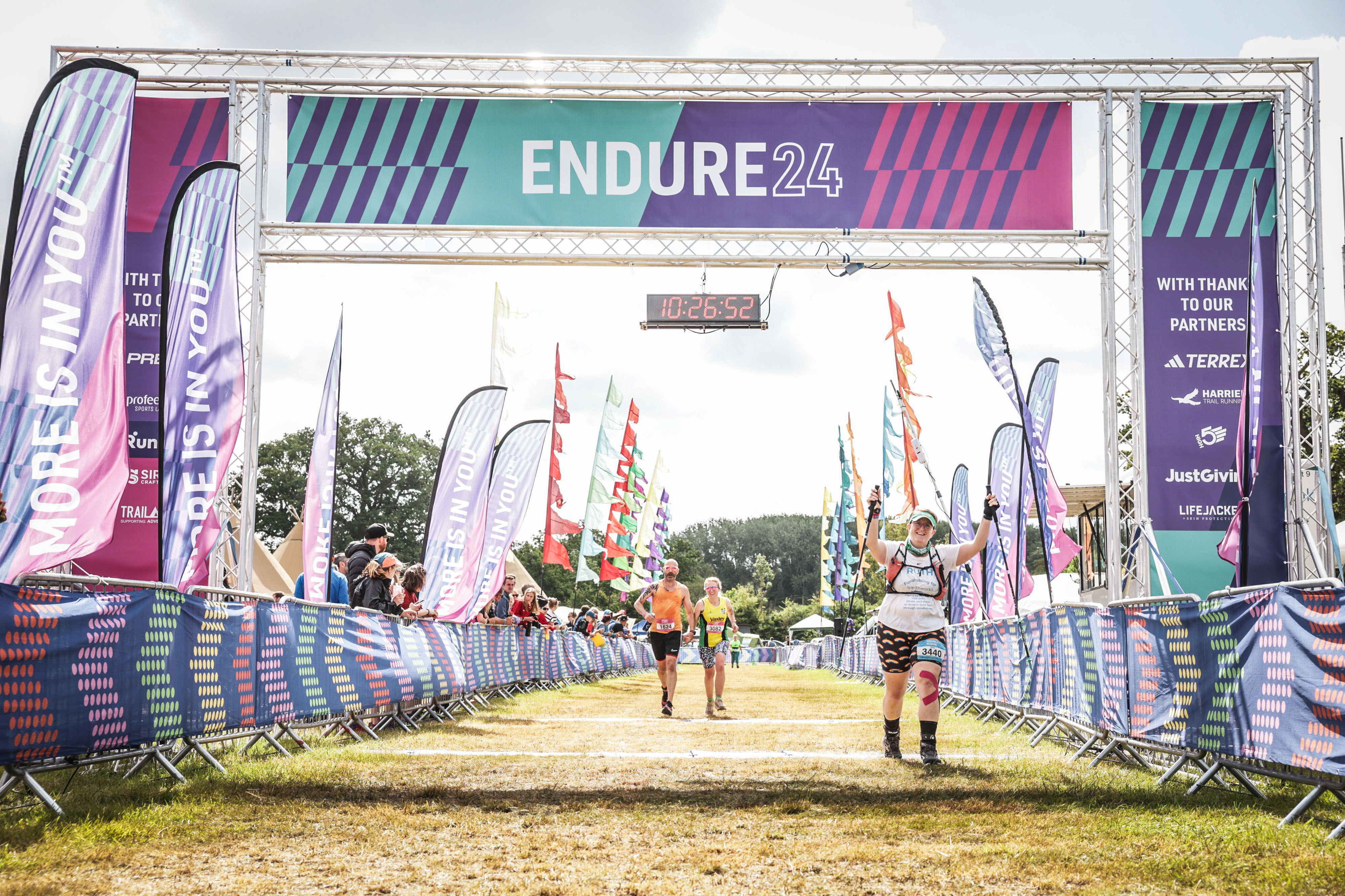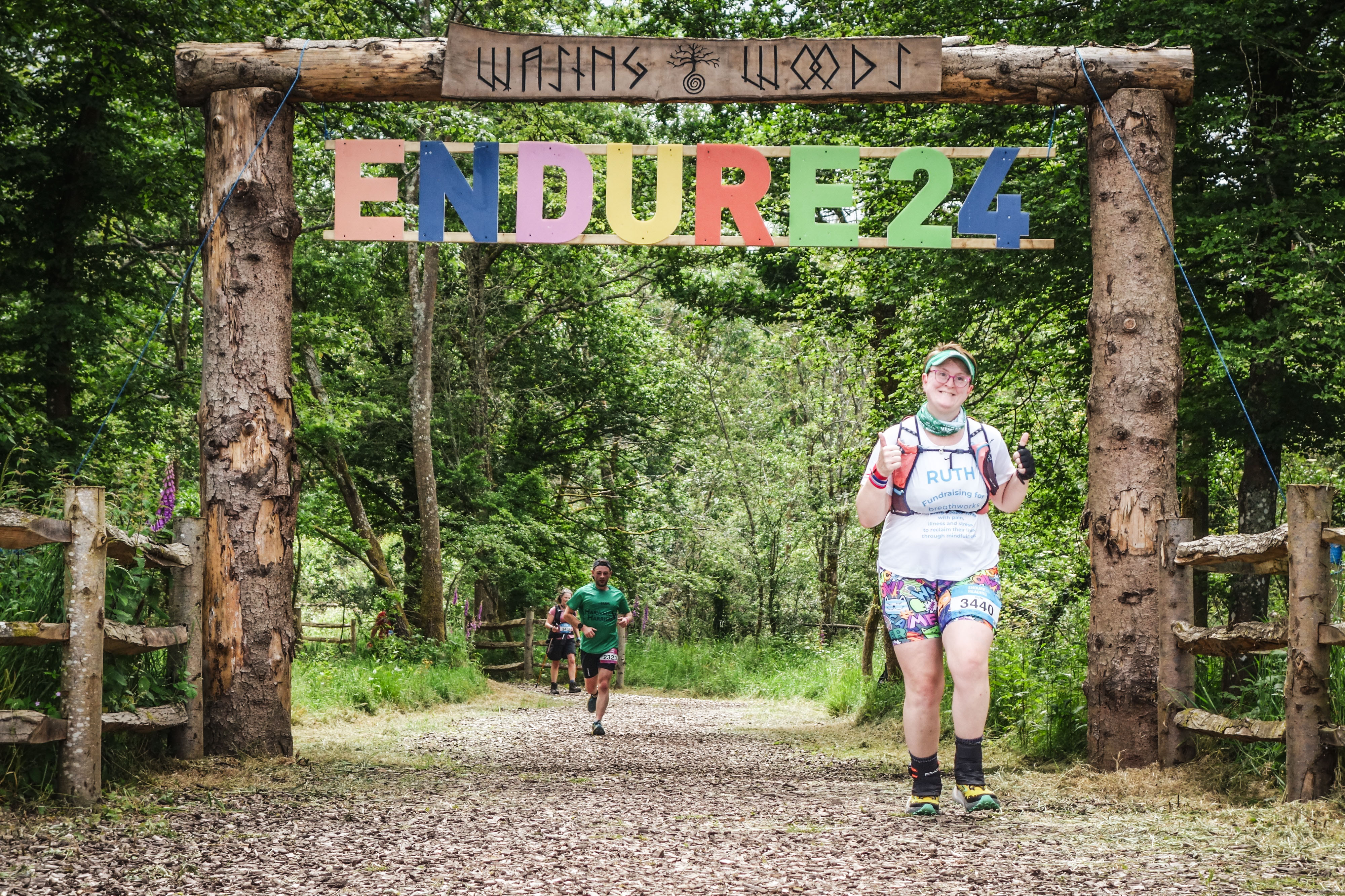This article was first posted on the Breathworks blog.
Prefer to listen? Check out this recording of me reading the article on Breathworks' Soundcloud.
I’ve been a trustee for Breathworks for the last three years, which allows me to bring my experience in marketing and communications to help Breathworks further its mission. It’s a great opportunity to give something back to Breathworks. In my role, I can support the excellent work that the marketing team does at Breathworks by bringing my professional experience to the table, as well as offering an outsider's perspective on strategy and long-term planning. This helps Breathworks continue its fantastic work around the world long into the future. It has really helped me to gain a deeper understanding of the breadth and depth of Breathworks’ offering and how well we’re placed to support people living with pain and illness.
Breathworks asked me to write this as a contribution to Pain Awareness Month.
My Ehlers-Danlos Syndrome diagnosis
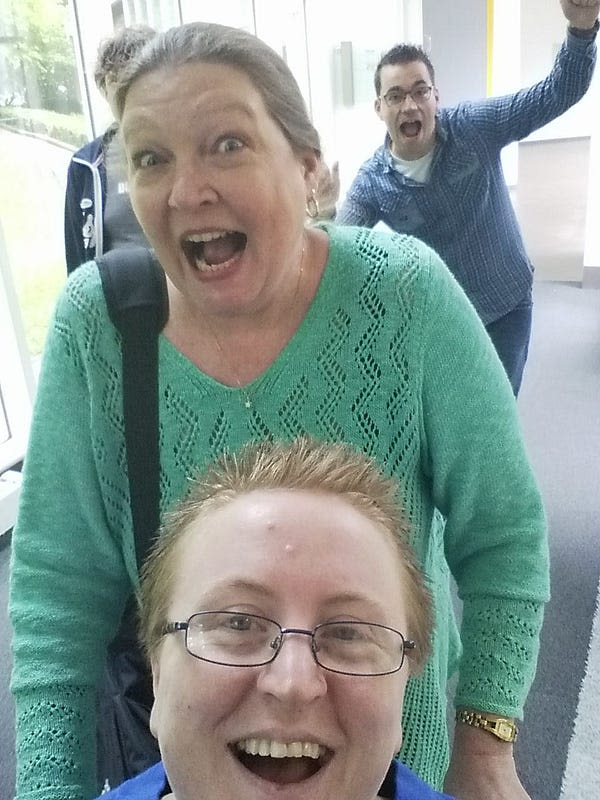 Although I work in the tech industry, I originally trained in Sport Science and later in Physiotherapy, during which time I was diagnosed with Ehlers-Danlos Syndrome. I’d always had pain in my joints as a very active child and was extremely clumsy—often twisting my ankles, bumping into things, and the like—but this was put down to growing pains and being inattentive. It wasn’t until I was training to be a physiotherapist that a lecturer noticed my hypermobility. Learning more about the condition was revelatory—it was like all the pieces of the jigsaw puzzle started to fall into place.
Although I work in the tech industry, I originally trained in Sport Science and later in Physiotherapy, during which time I was diagnosed with Ehlers-Danlos Syndrome. I’d always had pain in my joints as a very active child and was extremely clumsy—often twisting my ankles, bumping into things, and the like—but this was put down to growing pains and being inattentive. It wasn’t until I was training to be a physiotherapist that a lecturer noticed my hypermobility. Learning more about the condition was revelatory—it was like all the pieces of the jigsaw puzzle started to fall into place.
At that point, I wasn’t especially impacted by my hypermobility other than joint pain after exercise, so I just got on with my life. It wasn’t until a few years later that I really started to have problems, which began with thumb and wrist pain, escalating into shoulder and back pain, and then a complete health crash. For the first time in my life, I was signed off sick for over a month and told to completely rest. It was a debilitating time—my joints were all extremely sore, I had barely enough energy to get up and down the stairs in my house, and my mood as a result hit absolute rock bottom.
Everything that I had considered made me, me, was suddenly taken away from me. I was young, relatively active and healthy, and then I wasn’t. I was an instructor and assessor for the Duke of Edinburgh’s Award expedition section, and suddenly I couldn’t even walk to the end of my road, let alone be responsible for the safety of young people on a mountain. I did long-distance walks over several weeks up and down mountains, and now I couldn’t even cope with a flight of stairs. It was frightening to experience the physical crash, but even more so the feeling of being completely at sea when it came to who I now was if those things were no more.
Discovering mindfulness for Ehlers-Danlos Syndrome
Around this time, I came across the core teachings that Breathworks shares with the world—the second arrow, noticing how I was getting caught up in fear and anxiety about what might be rather than allowing myself to be with what is, and the practice of loving-kindness towards myself and my body, in particular. While there were some teachings that took a while to sink in—I think sometimes you really need to be ready to ‘hear’ them—little by little I started to notice that if I paid attention to my mental states and really got curious about them rather than just being consumed by them, I could actually work to change them.
This was such a lightbulb moment for me, particularly learning about the four right efforts—working to cultivate positive mental states and support their maintenance, and working to eradicate negative mental states and the conditions that lead to them arising.
My Ehlers-Danlos recovery journey
I realised I had to take some proactive steps to break the perpetual cycle of ‘boom and bust’ that I found myself in, both in terms of pain cycles but also in terms of available energy. It took me over a year to fully be on board with the decision to start using a wheelchair, which would allow my body to physically rest so that I could create the conditions for me to work on developing my strength, to support my joints, and to reduce the pain in my joints.
I felt like I had to come to that decision fully integrated with my whole being behind it because if I had any doubts at all, I would just fall into despondency. Instead, I focused on seeing it as a positive step that would enable me to heal my body and support future recovery.
It took oodles of compassion towards myself, and a lot of support from close friends and colleagues, but it really did make a profound difference and was the first step towards recovery.
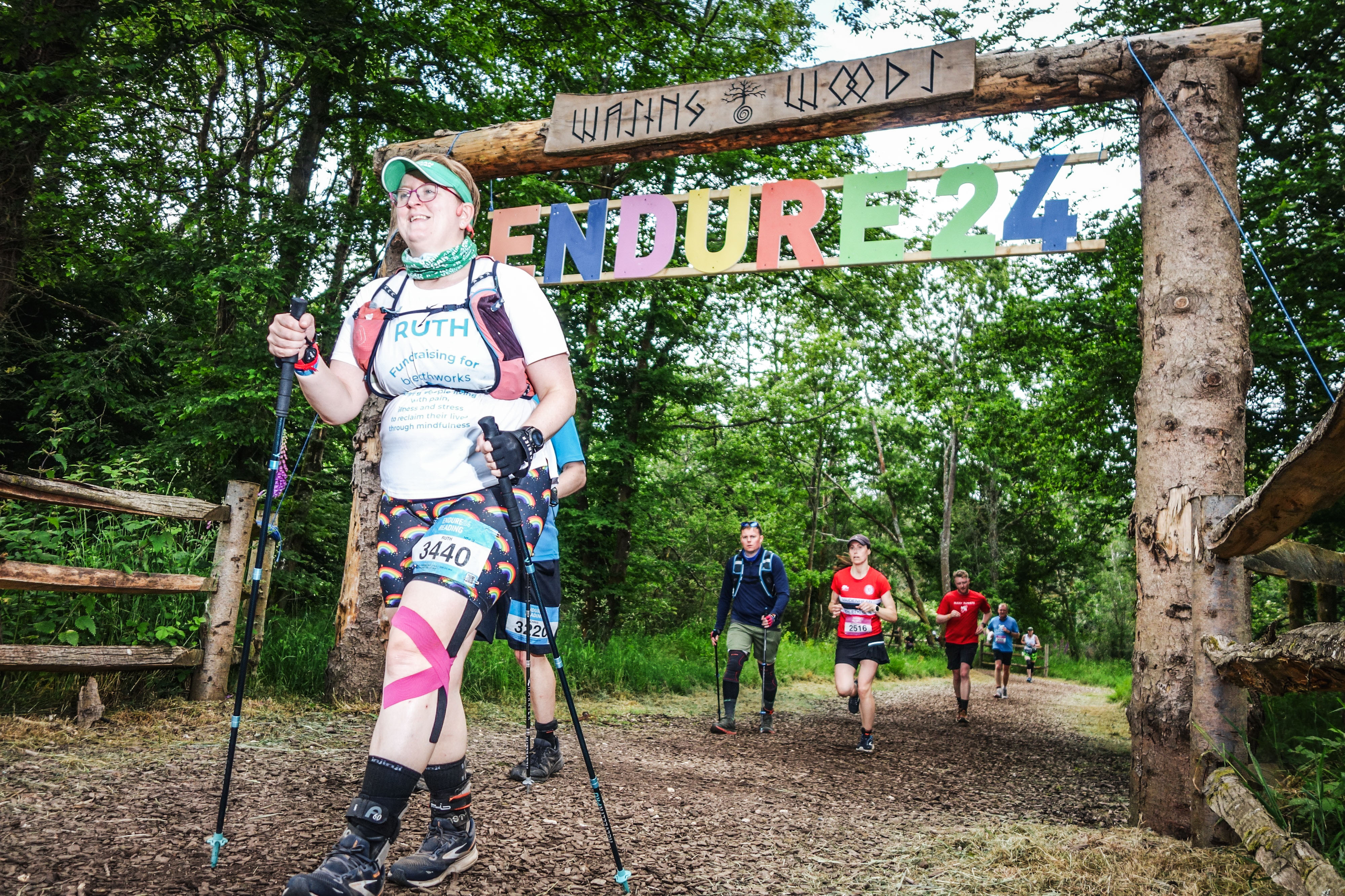
Learning to train with Ehlers-Danlos Syndrome
With the energy that this unlocked, I was able to find a trainer who specialised in working with people who had disabilities, and we started right at the basics—sit to stand, side lunges holding a chair, walking and then jogging from one side of the tennis court to the other, and eventually managing the long length, and then graduating to laps. It took over a year before I was able to keep going for more than 5 minutes, but the progress was steady and sustainable. My primary goal was to avoid flare-ups—the physical side was secondary to that at all times.
My ‘pie in the sky’ goal, which I set on the first day with that trainer—although I secretly believed it would never be possible but she made me dream it anyway—was to run a 5k. It took several years, but on 30 June 2017, I did my first ever 5k run in just over 43 minutes, and on 12 May 2018, I completed my first ever race in 39 minutes. I was the last person over the line, but I got to ring the Personal Best bell and was utterly delighted!
Over the next years, I gradually gained more confidence with strength and conditioning training, which is the most important thing for living with Ehlers-Danlos Syndrome, as it means your muscles are better equipped to take up the slack from the weaker connective tissue. I also developed something of a passion for running. I found my body and mind much preferred longer, slower runs to short, faster 5k races, so I started to wonder how to extend the distance safely.
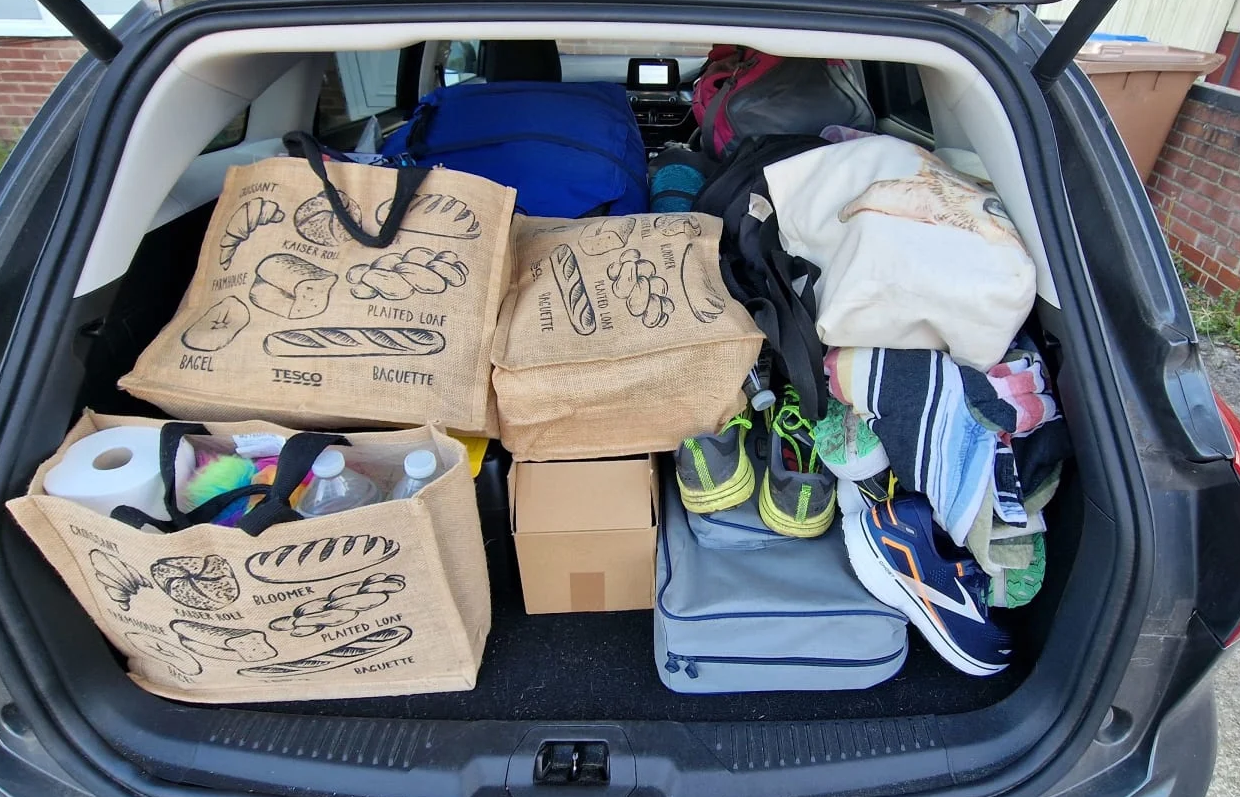
Training for my first long-distance race
Coming up to the pandemic, I was training for my first-ever half-marathon, but after contracting COVID-19 in March 2020 and suffering a lot of problems with my breathing for several months, that was shelved until 2022 when I had the chance to run solo in a 24-hour event called Endure24. It’s a 5-mile off-road hilly circuit which you can do as many or as few times as you like in a 24-hour period, at your own pace, stopping when you want. It fit perfectly with caring for my body and going at my own pace with my own goals, so in 2022 I found myself doing my first-ever long-distance race.
Of course, it’s not sensible to embark on a 24-hour run (or indeed any kind of run) without doing any training, so I researched various plans and ended up following one by MyProCoach, which really emphasised the principles of 80/20 training—80% of your training in zone 2 (of your heart rate zones), and 20% above that—which I found my body tolerated the best (and is backed up by a lot of scientific research). It also emphasised the importance of strength training. The plan gradually increased the mileage and had regular fitness tests which allowed it to adapt to my improving fitness. I started formal training in November by doing a mile a day (which is about 15 minutes of running for me) for 40 days, which got me back into the regularity of running and got me through the winter months. Then in January, I started the 6-month training plan and come race day, I managed to do 40 miles!
Fundraising for Breathworks
I had such an amazing experience at Endure24 2022 that I decided to do it all again, this time fundraising to support Breathworks. So, in 2024 I started the training, again following a plan from MyProCoach.
I’d planned to run in 2023 but injured my shoulder in the gym, which resulted in a frozen shoulder, so I had to delay until 2024. Then towards the end of 2023, I fell and badly broke my opposite wrist, which needed surgery and a lengthy recovery. It was a little bit touch-and-go as to whether I’d be able to fit the training in due to the injury, but we managed it with lots of modifications!
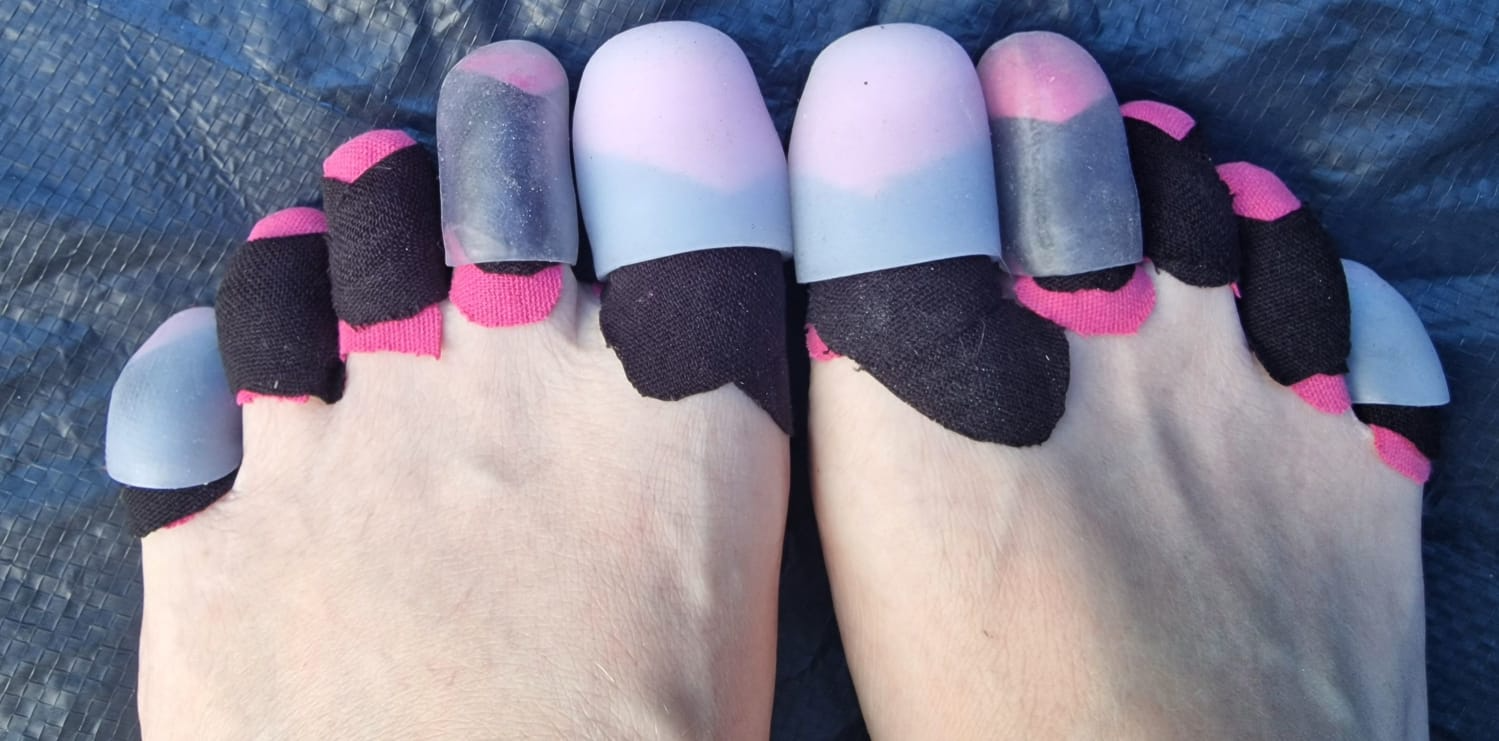
Dealing with bumps in the road
With EDS, if you want to train consistently, you’re always having to make modifications and customisations because you’re pretty much always carrying an injury, a painful joint, or have aching parts of your body. Thankfully, throughout all the injuries, my running coach was able to shift my running training to cycling when I wasn’t able to run, and my Personal Trainer had great fun coming up with creative ways to do leg and core days every week when my upper body was out of action!
Past me would have been absolutely devastated, but I just allowed myself to experience that sadness and frustration at being injured, and worked on reframing the experience as a bump in the road that slowed me down but did not stop me from reaching my goal—it would just take a bit longer to get there.
Endure24 Race Day
Going into the race is always a real feeling of elation—I had made it to the start line after all the challenges, injuries, and difficulties. I'd done the hard work, now was the time to enjoy it. And also a slight apprehension about what lay ahead. Twenty-four hours is a long time, and anything can happen! I’d had a problem with my Achilles tendon in the month before the race, so I’d only actually run at most 13 miles, as I’d missed most of my long runs so that I didn’t further aggravate it. How was I going to manage to do 50 miles?!
Probably the biggest challenge on a 24-hour run is when it starts to get painful. You’re going to experience pain at some point, and it’s important to get familiar enough with your body and have a strong enough practice of mindfulness so that you can recognise the difference between the inevitable discomfort of ‘I’ve been running for a long time’ and the pain of ‘my body has something wrong and I need to do something about it’.

With the former, I have to work with my mind and just keep myself going—whether that’s by listening to podcasts or audiobooks or my favourite playlists, phoning a friend (I had a wonderful WhatsApp group this year who were amazing at 3 am when I was contemplating ducking out of the last 10 miles!) or my personal favourite of eating a bunch of high-sugar, incredibly sour sweets at 4 am to give me a kick!
I did experience worsening knee pain from 30 miles into the race, but I was fairly sure it was a flare-up of an old complaint, so I taped it heavily, allowed myself to switch from running to run/walk/run and eventually speed walking with poles for support, which enabled me to keep going.
Working with the mind
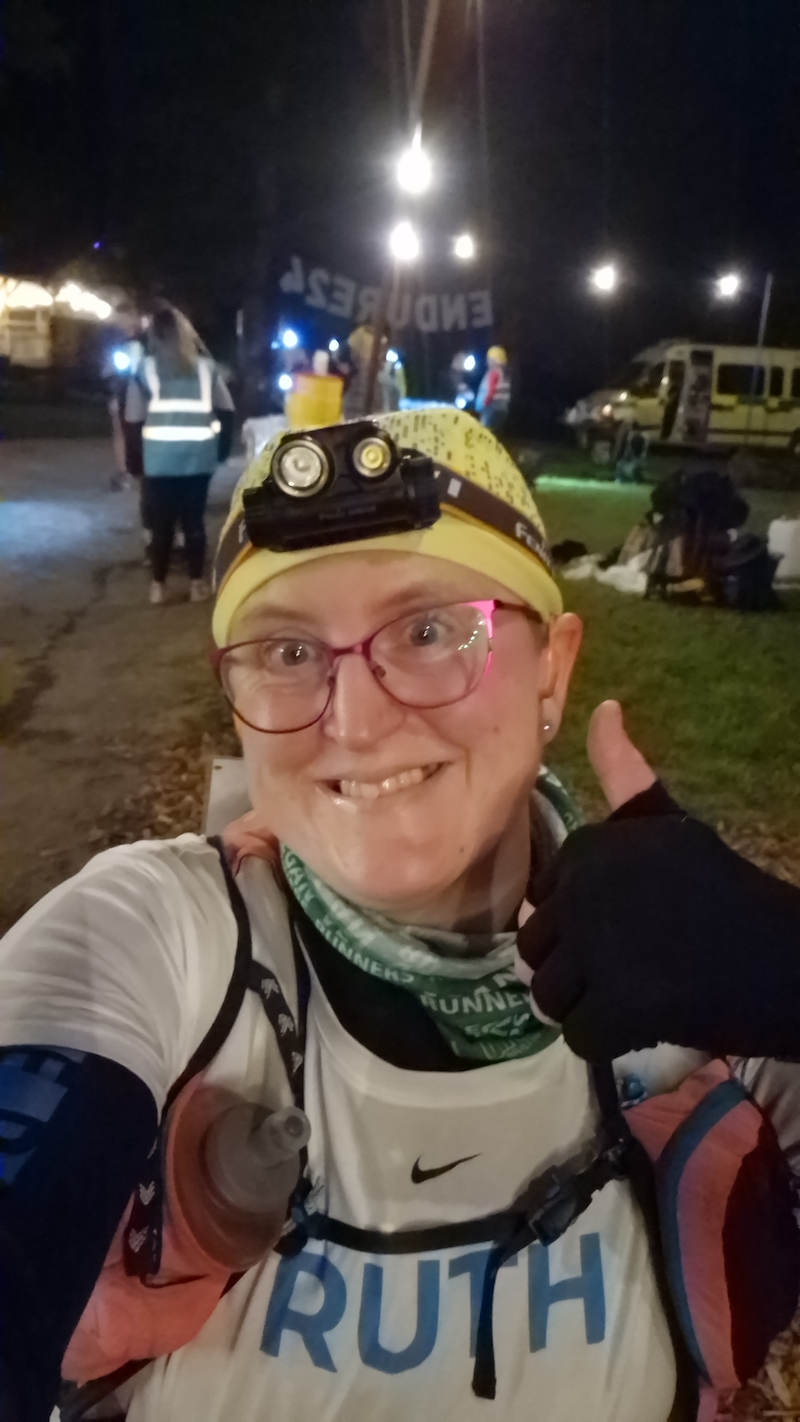 One of my running coaches from the early days used to say that running is 80% mental and only 20% physical, and this is especially true for endurance running. Working with my mind has been so important. I had a really strong visualisation of myself toeing the line in the starting pen at the event, experiencing how it would feel—and that literally got me out of bed many mornings knowing that I had committed to it, that I would not get there without putting in the effort.
One of my running coaches from the early days used to say that running is 80% mental and only 20% physical, and this is especially true for endurance running. Working with my mind has been so important. I had a really strong visualisation of myself toeing the line in the starting pen at the event, experiencing how it would feel—and that literally got me out of bed many mornings knowing that I had committed to it, that I would not get there without putting in the effort.
I also find that when I am just having to keep going, just keep putting one foot in front of the other, listening to my body and making sure I was giving it what it needed, it was like a 24-hour-long meditative experience. There were times of absolute, utter stillness and blissful experiences just plodding along fully connected with my body and the world around me.
Coming over one particular section at 2 am and seeing horizon-to-horizon stars moved me so deeply, such a deep feeling of interconnectedness and awareness of reality as it truly is—like getting a tiny crack of a glimpse into something that is just unimaginable in its scale and beauty. Of course, there are also times when you get to Heartbreak Hill for the 7th time knowing you’ve got 3 more to go, when the mind is decidedly less positively engaged, but that’s also an opportunity for working with those mental states, too!
Going after my goals
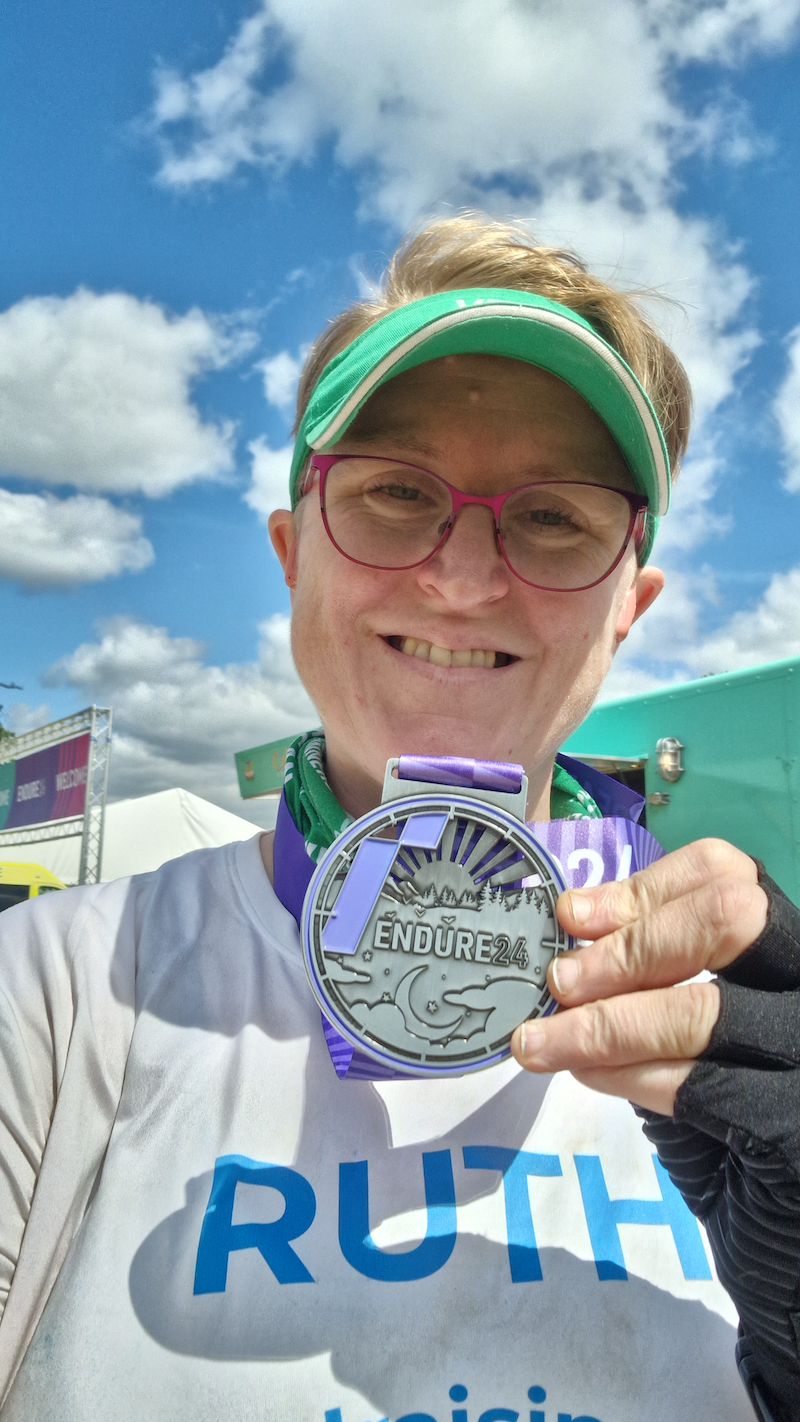 My goals for the race were to keep going throughout the night, and to hit a total of 50 miles—10 laps of the circuit. It was quite an ambitious goal for me, especially as this year I was unsupported so I had to sort out all my own fuel, kit changes and motivation!
My goals for the race were to keep going throughout the night, and to hit a total of 50 miles—10 laps of the circuit. It was quite an ambitious goal for me, especially as this year I was unsupported so I had to sort out all my own fuel, kit changes and motivation!
I did the first 20 miles without much of a break, and stopped to change into my winter clothes at around 9 pm when it started to get cold—I ended up doing the 3 am lap with a hoodie on top as it got below freezing that night! By the early hours, I had equalled the previous total of 40 miles and it was time for a kit change again. I allowed myself a 30-minute break (setting my alarm so I didn’t end up wasting too much time or falling asleep!) and was seriously considering calling it quits, but thanks to some virtual encouragement I got back out on the trail and clocked up another two laps, mostly walking by that time as my knee was quite sore on the (numerous) up and downhill sections!
Coming over the line and having hit 50 miles, hearing that shouted out over the loudspeaker and also shouting that I was fundraising for Breathworks, and a big cheer erupting from everybody was a moment I won’t forget. What an achievement—50 long miles!
I’m really proud that we managed to raise £793 so far, including Gift Aid, which goes towards supporting Breathworks in being able to support people living with pain and illness. If you’d like to make a donation, you can do that via the fundraising page here.
Future plans
In terms of future plans for similar events, my body generally needs quite some time to fully recover from an ultramarathon, so it’s at least 3 months before I do any kind of running, and even then it’s just very gentle—usually I switch to strength and other fun cardio activities like classes, which I can’t do when I’m in a training plan because it leads to overtraining.
I won’t be doing an ultramarathon next year because I have some large chunks of time where I probably can’t train due to other commitments, but perhaps in 2026 I’ll have another go! I really love the camaraderie and the atmosphere at the longer 24-hour races, but I might try an ‘A to B’ race rather than a circuit, just to experience the difference, or maybe something like a duathlon which involves running, cycling and then running again.
